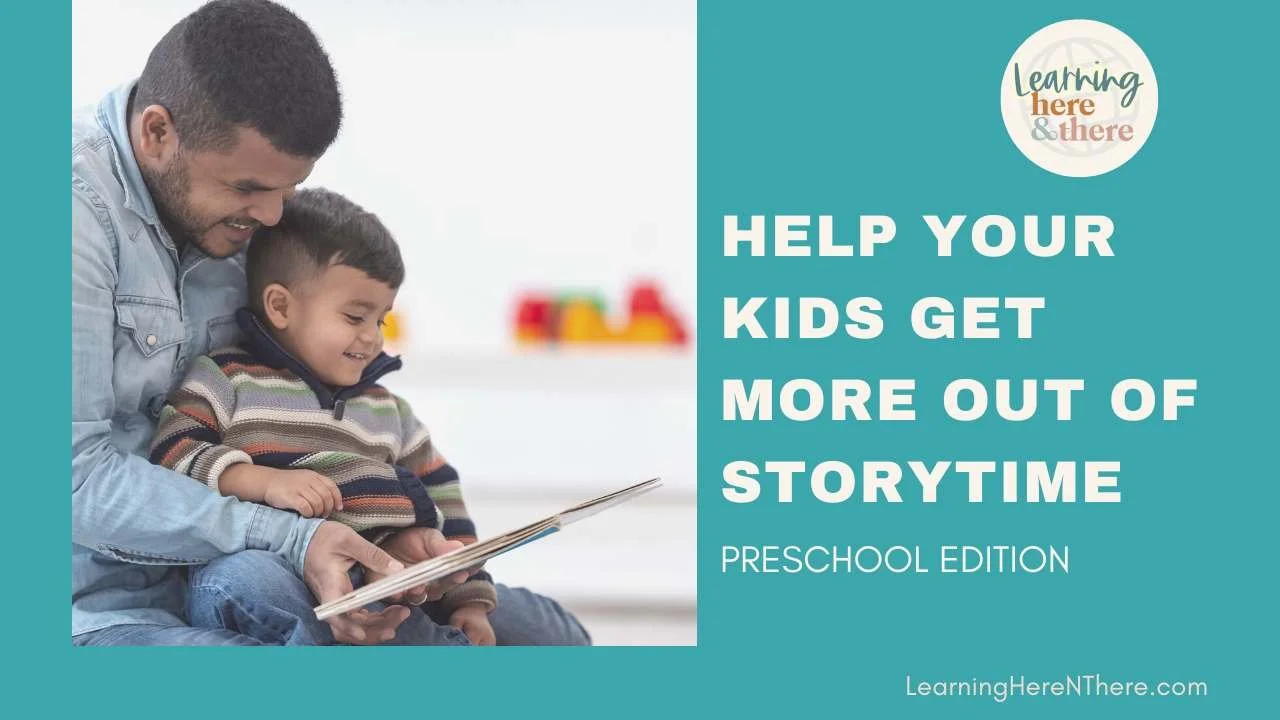Help Your Kids get More from Story Time (Pre K Version)
Reading to your children (or any children you care for) is one of the best ways to have a positive impact on their future. If you're interested to know more about why you should be doing read aloud with your kids, you can read about the Benefits of Reading to Children. While just reading to your child is a wonderful practice that benefits your child greatly, you can do a few things to help your child get more out of your story time together.
In this post I share some tips to use when reading to your child(ren) that I've gleaned from a combination of my reading instruction training and my experience as a parent who reads daily to a young child. Not all of these suggestions should be used with every book you read to your kids. Just try to incorporate as many of them as possible as you deem appropriate for the book you're reading. Over time, with consistent implementation of these tips you will help your kids get more from story time.
Choose good books. - A "good book' can mean a lot of different things. For example, The Velveteen Rabbit by Margery Williams is certainly recognized as quality literature, however, it is way too long and slow moving for my toddler to enjoy. As I mention in my post, Help Your Kids Discover the Joy of Reading, story time should be a fun time, so if the book is too boring for your child, move on to something else. Children's tastes and stamina change over time, so you can come back to books that weren't "good" before. I will pull out the Velveteen Rabbit sometime in the future to share with my daughter when she is able to sit still longer and understand deeper meanings.
Read the book to yourself first. - I'm sure you've heard the old addage, "Don't judge a book by it's cover." This is so important to remember. Just because it has an engaging cover and great pictures or even 5 star reviews doesn't mean it's a "good book" for the child(ren) you're reading to. Read the whole thing to yourself first to be absolutely sure it is a good choice.
Spend some time analyzing the cover. - Now you're ready to sit and read together, but before you even open the book, talk about what you notice on the cover. The child might recognize familiar characters, or that this is a book about a topic they really enjoy. Read and discuss the title (pointing to the words as you read them).
Start with a quick summary. - As you're discussing the cover, give the child a one or two sentence summary of the book. (Just don't give away the ending.)
Let the child turn the page. - Whenever possible, let the child turn the page. This may seem like a small thing, but it actually helps the child learn which way to orient a book and which way we turn the pages to read it.
Engage the child. Don't just read through the story. Pause as you go to involve the child in the reading. You can do this by asking questions (Does this remind you of anything? What would you do? ), making predictions (What do you think will happen next?), and analyzing the pictures (point out clues and facial expressions that give more information about the story), or if you're reading a book with a repetitive phrase, pause at that part to let the child say the phrase.
Share your inner dialogue - If you say aloud what you're thinking as you read, your child will begin to understand that he/she should be thinking about the text too. This is the first step toward reading comprehension.
Point to the words. - You don't have to do it all the time, but occasionally point to the words and sentences as you read them. The older the child is, the more you should be pointing to the text as you read it. This will help the child begin to develop some concepts of print (that words are made up of letters, and we read from left to right, top to bottom, etc...).
Sum it up. - After you finish the book, talk about it a little bit. (What did you like about it? What was your favorite part? I like the characters because...etc...) This step may not be appropriate for every book you read to toddlers and preschoolers, but be on the lookout for opportunities for discussion.
Extend the story. - Some books really lend themselves to extension activities. (Crafts, baking, etc...) You can see how I did this with my daughter using Mouse Paints by Ellen Stoll Walsh or Ten Apples up on Top by Dr. Seuss.
For more ideas on ways to extend books, follow my storybook activities board on Pinterest.
Hopefully, you have found some useful tips to implement while reading with your kids that will help them get more from story time. If you want to see an example of these suggestions in action, sit in on a story time session at your local library and pay close attention to how the librarian (hopefully) uses many of these tips.
Save these tips for later by pinning the image below. Thanks!




